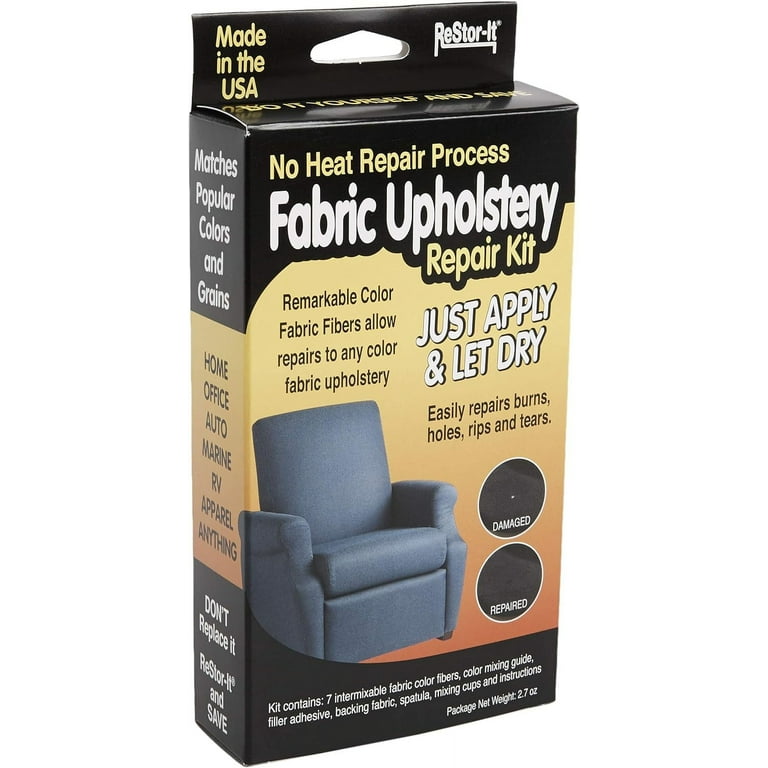The Ultimate Overview to Upholstery Fixing Techniques
In the realm of furnishings maintenance, the art of furniture repair is a skill that can breathe brand-new life into damaged items and maintain cherished belongings. Keep tuned as we decipher the ins and outs of this craft and reveal the keys to mastering upholstery repair work methods that will elevate your furnishings restoration ventures.
Assessing Upholstery Damage
When analyzing furniture damage, it is vital to conduct a comprehensive assessment to properly establish the level of the issues present. Begin by visually inspecting the upholstery for any visible tears, slits, spots, or discoloration.
Following, examine the hidden structure of the upholstery to look for any damage to the structure, springtimes, or cushioning. Often, the damage might not be immediately noticeable on the surface area however could significantly influence the general stability of the upholstery. By extensively taking a look at both the outside upholstery and inner elements, you can ensure that all concerns are determined and appropriately resolved throughout the fixing procedure.
In addition, think about the sort of furniture material used as various fabrics and natural leathers may call for particular repair strategies. upholstery repair. Comprehending the product buildings will help in choosing one of the most appropriate repair techniques and items to accomplish optimum results
Crucial Tools and Products
To efficiently perform furniture repair work, having the proper devices and materials is extremely important for achieving professional outcomes. Essential tools for furniture fixing consist of a staple gun for protecting fabric, upholstery needles and string for sewing, scissors for cutting fabric, a rubber club for touching in furniture components, and pliers for getting rid of old staples and nails. By guaranteeing you have the required tools and products prior to starting a furniture repair service job, you can work effectively and properly to recover furniture to its previous splendor.
Preparing the Furniture Surface Area
Prep work of the furniture surface area is a vital preliminary step in making certain the successful outcome of any kind of upholstery repair job. Before starting any repair, it is essential to extensively clean up the furnishings surface to get rid of dust, dust, and any various other debris that might disrupt the bond of new materials. This can be done making use of a vacuum, a soft brush, or a damp fabric, depending on the sort of furnishings and the degree of dirt existing.
As soon as the surface is tidy, any loosened or damaged furniture material, cushioning, or springs need to be carefully removed. This step is important to ensure that the new materials adhere securely and visit homepage that the fixed upholstery preserves a smooth and expert appearance. Furthermore, any kind of old staples or tacks ought to be taken you can find out more out, and the surface area should be checked for any kind of structural damage that may require to be addressed before proceeding with the repair service.

Repairing Holes and tears
After making sure the furnishings surface is devoid of dirt, debris, and dust and removing any broken or loosened furniture materials, the next action in furniture fixing entails resolving rips and openings in the textile. Fixing splits and openings in upholstery can help extend the life of your furnishings and recover its aesthetic appeal. One common approach for fixing tiny splits and holes is by utilizing a needle and string to sew the sides of the broken location back together. For larger tears or openings, a spot of material can be used to cover and enhance the broken area (upholstery repair). Material glue or adhesive can additionally be made use of to protect the spot in location. It is very important to thoroughly match the shade and structure of the patch textile to the original furniture for a seamless repair. When the tear or hole is fixed, ensure that the location is appropriately cleaned and dried out before utilizing the furniture once again to stop any kind of further damages.
Getting Rid Of Odors and spots
Resolving stubborn stains and remaining odors in upholstery requires a targeted and thorough approach to make certain reliable reconstruction of the textile's appearance and quality. Stains can be triggered by various materials such as food spills, family pet mishaps, or drink mishaps, while smells commonly come from smoke, pet dander, or spills penetrating the furniture fibers. To take on stains, it is important to identify the kind of stain first to use the appropriate cleansing remedy. For water-based discolorations, blotting with a combination of light cleaning agent and water can be reliable, while oil-based spots may require a solvent-based cleaner. Smells, on the various other hand, require a deeper cleaning procedure that includes reducing the effects of the source of the smell as opposed to concealing it. Making use of sodium bicarbonate or specialized upholstery deodorizers can help remove smells successfully. Sometimes, professional cleansing solutions may navigate here be required for extreme spots and odors that persist regardless of natural home remedy. Regular upkeep and punctual interest to spills can aid in preventing deep-rooted spots and odors, maintaining the furniture's condition.

Verdict
To conclude, grasping furniture repair techniques needs mindful analysis of damage, using necessary devices and products, proper preparation of the furniture surface, and the experienced fixing of tears, holes, spots, and smells. By adhering to these steps, people can successfully recover and lengthen the life of their furnishings.

Essential devices for furniture repair work include a staple weapon for protecting material, furniture needles and string for stitching, scissors for reducing material, a rubber mallet for touching in furnishings components, and pliers for getting rid of old staples and nails. By guaranteeing you have the required devices and products before beginning an upholstery repair task, you can work efficiently and properly to bring back furnishings to its previous glory.
Preparation of the furnishings surface is a crucial first step in making certain the successful outcome of any type of upholstery repair service project.After making certain the furniture surface area is totally free of dust, dust, and debris and getting rid of any type of loose or damaged upholstery products, the next step in furniture repair work entails dealing with rips and holes in the material - upholstery repair. Fixing rips and openings in furniture can help prolong the life of your furnishings and restore its aesthetic charm